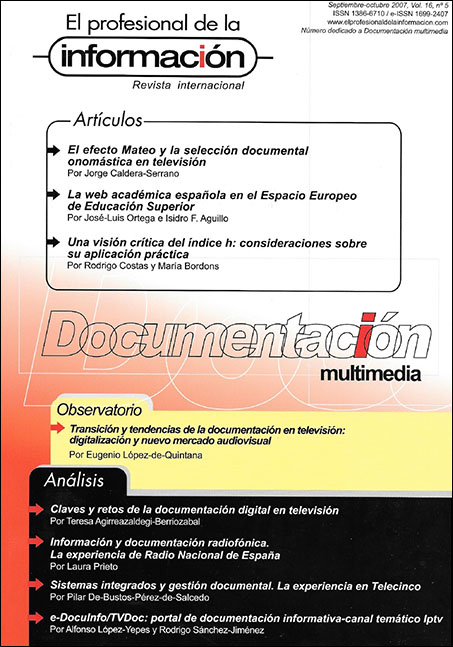Document engineering: potential academic applications
DOI:
https://doi.org/10.3145/epi.2007.sep.12Keywords:
XML, Document Type, XML Schemas, Document Engineering, Web Services, SOA (Service Oriented Architecture)Abstract
Document design has long been a standard task for information professionals. Nonetheless, the use of XML to encode and transfer electronic documents across networks and the development of various methods to describe the characteristics of various document types (XML schemas, RelaxNG, etc.) and their metadata have made clear the need for a more formal, structured approach to the design of various document types and their implementation using XML standards. This insight, combined with the requirements of new technological approaches to integrating software applications - web services or service-oriented architecture (SOA) - that rely on XML for document exchange across platforms, results in a need for documents whose structure is precisely defined. The work of Robert J. Glushko, specifically document engineering, provides the primary theoretical approach to this problem. Document engineering includes the activities necessary for the design of document types and their use as interfaces between systems in SOA environments. His work offers a formal, academic approach to what is currently one of the most interesting opportunities for information professionals.
Downloads
Downloads
Published
How to Cite
Issue
Section
License
Dissemination conditions of the articles once they are published
Authors can freely disseminate their articles on websites, social networks and repositories
However, the following conditions must be respected:
- Only the editorial version should be made public. Please do not publish preprints, postprints or proofs.
- Along with this copy, a specific mention of the publication in which the text has appeared must be included, also adding a clickable link to the URL: http://www.profesionaldelainformacion.com
- Only the final editorial version should be made public. Please do not publish preprints, postprints or proofs.
- Along with that copy, a specific mention of the publication in which the text has appeared must be included, also adding a clickable link to the URL: http://revista.profesionaldelainformacion.com
Profesional de la información journal offers the articles in open access with a Creative Commons BY license.




